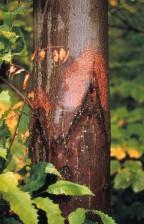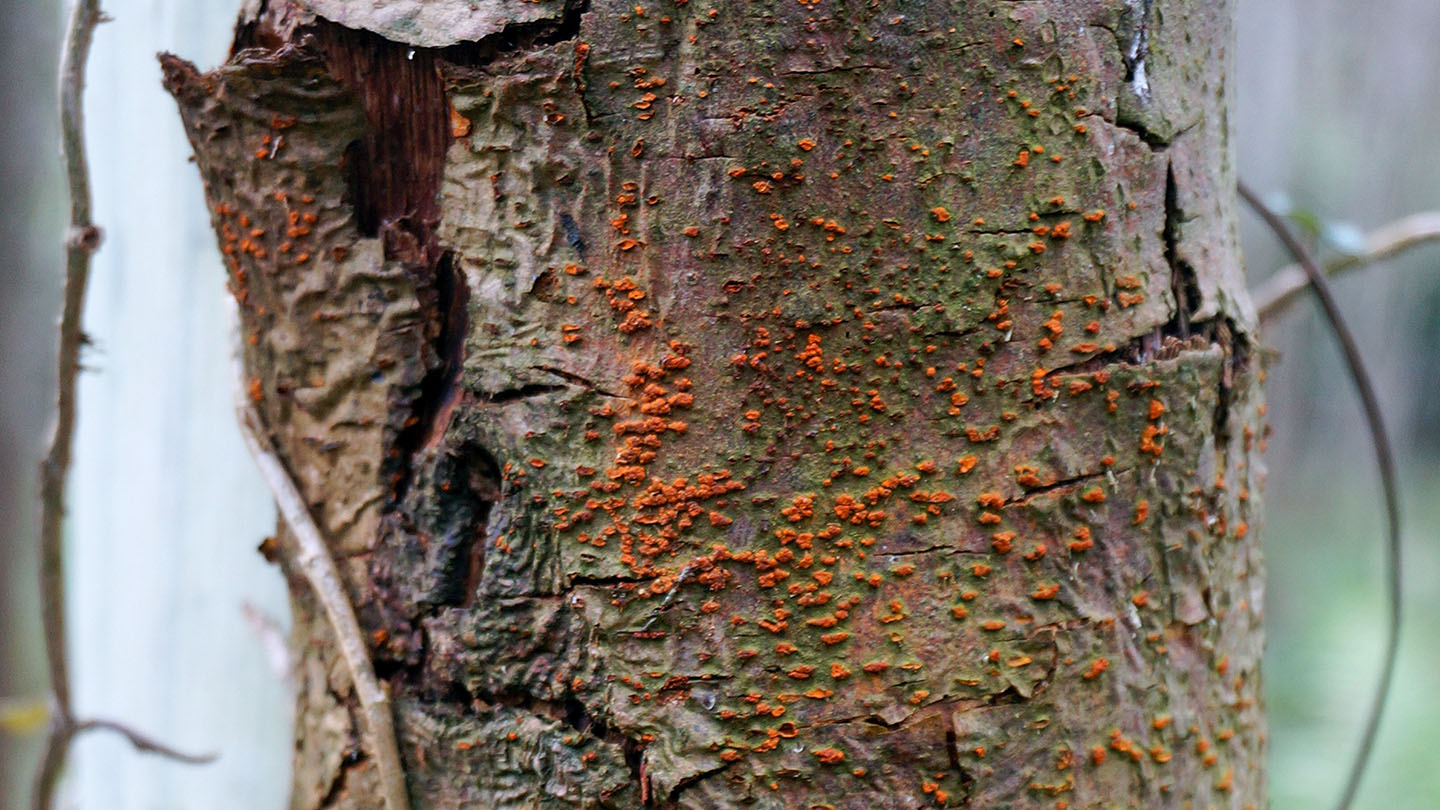

If pruning must be done during the growing season, sterilize pruning tools between each cut.If only a few stems are blighted, they can be removed as described above. If fire blight is seriously damaging a cotoneaster hedge, cut the hedge to about six inches above the ground in late winter.Make the pruning cut through healthy wood at least 8 inches below the discolored bark of a canker.This reduces the amount of sucker growth from wounds and eliminates the chance of spreading infections between pruning cuts. Prune diseased twigs and branches in late winter when the tree and bacteria are dormant.Twigs and branches infected with fire blight can be pruned out in order to prevent the infection from spreading to the main trunk. In highly susceptible cultivars, the bacteria can move into the main trunk of the tree and even the roots.New branch cankers are formed by bacteria moving into branches in this way. Once the bacteria have infected either blossoms or shoots, the bacteria can move into the branch through the vascular system of the tree.


Young shoots are infected through small wounds caused by insect feeding, wind whipping of branches, blowing sand or other damage.Many infections start when bacteria growing on flowers reach a certain population and enter the flower through natural openings.Bacteria need a wound or a natural opening to infect the tree.The fire blight bacteria will live and multiply on the surface of leaves, twigs, flowers and immature fruit for a few weeks without causing symptoms.Bacteria can also be moved by splashing water from rain or irrigation, or on the hands and tools of gardeners.Insects such as pollinators are attracted to this sweetness and carry the bacteria to wounds or flowers.The bacteria seep out of the canker through natural openings or cracks as a sweet, sticky liquid known as bacterial ooze. In spring, during warm, wet weather, bacteria begin to multiply.Our results indicate that different CHV-1 subtypes could be used differently in the biological control of chestnut blight.The fire blight bacteria survive winter in cankers on the trunk or branches of infected trees. The greater ecological fitness of subtype I than of subtypes F1 and F2 probably accounts for its greater invasiveness. Fungal isolates infected with CHV-1 subtypes F1 or F2 grew significantly slower and had lower levels of sporulation than isolates infected with the naturally occurring subtype I viruses. Of the 79 hypoviruses identified, 78 belonged to CHV-1 subtype I, and one to subtype F2. Our study revealed that the CHV-1 subtype F1 used for biological control did not become established in the study area. parasitica cankers varied from 31 to 90% between sites and was not related to biological control treatment or to the diversity of vegetative compatibility types of the fungal population. Using these data, we explored the potential effects of control treatments, fungal vegetative incompatibility and the ecological fitness of viral subtypes on the establishment of CHV-1 in C. We assessed the prevalence of subtypes of CHV-1 in south-eastern France, where a specific CHV-1 subtype (F1) has been released for biological control at several chestnut sites. However, the development of self-sustaining hypovirulence following the deployment of virus strains has never clearly been demonstrated. Cryphonectria hypovirus 1 (CHV-1) is responsible for hypovirulence (reduced virulence) in the chestnut blight fungus Cryphonectria parasitica and has been used as a biocontrol agent against this introduced tree pathogen.


 0 kommentar(er)
0 kommentar(er)
